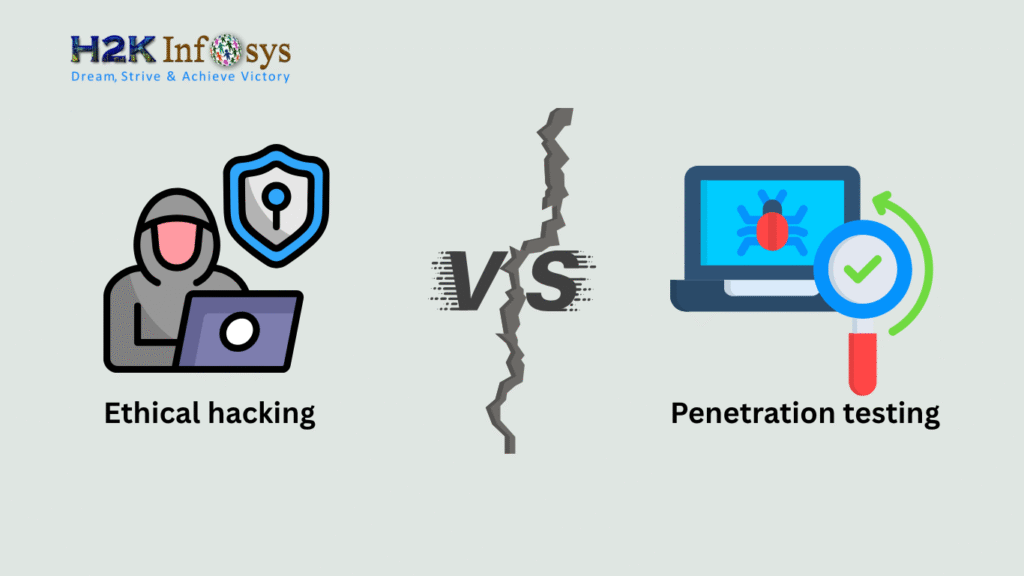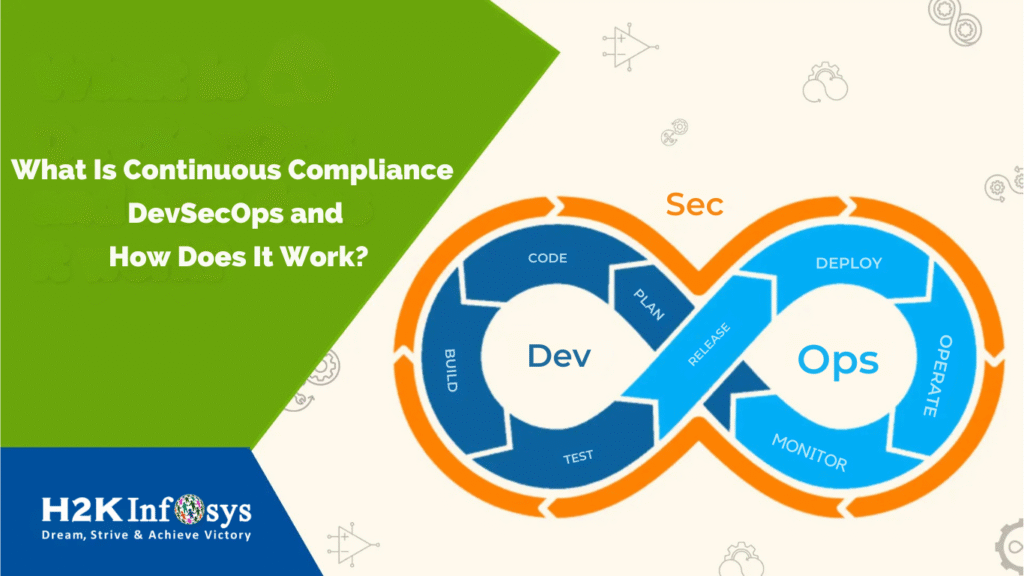Experience based testing techniques are critical components of the software testing process, especially when conventional methods like requirement-based testing fall short. These techniques rely on the tester’s intuition, expertise, and practical knowledge, making them invaluable for identifying hidden defects and enhancing software quality. In this guide, we’ll explore the key experience-based testing techniques, their importance, and how they can be effectively applied in real-world scenarios.
Understanding Experience Based Testing
Experience based testing is a type of software testing that relies on the skills, intuition, and prior experience of the tester rather than predefined test cases or detailed requirements. Unlike formal testing methods that strictly follow documented test cases, experience-based testing is more flexible and can quickly adapt to changes. Testers draw on their past experiences with similar applications, known defect patterns, and understanding of the system to design tests on the fly.
Importance of Experience-Based Testing
Experience-based testing techniques play a crucial role in ensuring comprehensive coverage, particularly when documentation is incomplete, or the application is too complex for requirement-based approaches alone. Here’s why experience-based testing is essential:
- Identifies Hidden Defects: Experience-based techniques help uncover defects that might not be visible through formal testing, focusing on areas known to be problematic in similar applications.
- Enhances Test Coverage: Testers can explore scenarios beyond the documented test cases, which often leads to discovering edge cases and corner cases missed by traditional approaches.
- Adaptive and Agile: This testing approach is particularly useful in agile environments where requirements often evolve, and rapid feedback is needed.
- Cost-Effective: Since it doesn’t rely heavily on documentation, it can save time and resources, particularly when changes are frequent or requirements are unclear.
Key Experience-Based Testing Techniques
Several techniques fall under the umbrella of experience-based testing. Each technique leverages the tester’s knowledge and experience to uncover defects effectively.
Error GuessingError guessing is one of the most intuitive forms of experience-based testing. It involves anticipating common errors based on the tester’s experience with similar systems. Testers use their knowledge of common mistakes, such as input validation errors, integration issues, or typical user mistakes, to design tests that directly target these weaknesses.
How It Works: Testers brainstorm possible errors and create test cases specifically to expose these errors. For example, if a tester has frequently encountered boundary value errors in similar systems, they might focus tests around edge cases that challenge the system’s limits.
Best Practices: To enhance error guessing, keep a log of past defects and continuously update it with new findings. This defect log can serve as a reference for future projects, improving the accuracy of error guessing over time.
Exploratory TestingExploratory testing is a highly interactive and creative testing approach where testers simultaneously learn about the application, design test cases, and execute them. It’s not scripted in advance; instead, the tester dynamically adjusts their approach based on the behavior of the system.
How It Works: Testers explore the application’s functionalities freely, focusing on areas they find risky or complex. This real-time testing allows testers to think outside the box and discover defects that structured tests might miss.
Best Practices: Use session-based test management (SBTM) to structure exploratory testing. This involves dividing the testing into time-boxed sessions with clear objectives and documenting findings at the end of each session.
Checklist-Based TestingChecklist-based testing involves using predefined checklists derived from past experiences, standards, and guidelines to guide the testing process. These checklists are not as detailed as formal test cases but serve as a reminder of what areas to test, ensuring no critical aspect is overlooked.
How It Works: A checklist might include items such as testing for common security vulnerabilities, verifying input validation, and checking user interface consistency. Testers tick off each item as they test the corresponding functionality.
Best Practices: Continuously update your checklists based on new insights and evolving industry standards. A well-maintained checklist helps maintain consistency and ensures that critical areas are always tested.
Fault Attack TestingFault attack testing involves intentionally injecting faults into the system to observe how it responds. This technique helps uncover how the application handles unexpected or erroneous conditions, providing insights into its robustness and error-handling capabilities.
How It Works: Testers deliberately introduce known faults or errors, such as incorrect input data types, invalid configurations, or resource unavailability, to see how the system reacts. The focus is on identifying how gracefully the application can recover from faults.
Best Practices: Use fault attack testing during critical phases of development where error-handling and resilience are crucial. Combine this with automated testing tools to introduce faults systematically and monitor application behavior.
Ad Hoc TestingAd hoc testing is a highly informal and unstructured testing approach that relies purely on the tester’s intuition and insight. It is often used when time is limited or when an immediate check is required before moving forward.
How It Works: Testers do not follow any structured approach or documentation. Instead, they interact with the application randomly to see if anything breaks. This spontaneous testing can reveal defects that may not have been considered in structured testing.
Best Practices: While ad hoc testing is informal, it’s beneficial to take notes on observed defects and insights during testing. This information can inform future testing efforts and improve the overall quality of the application.
Monkey TestingMonkey testing involves testing the application randomly with no specific test cases or plans. The goal is to find unexpected crashes or behavior by subjecting the application to random inputs and actions.
How It Works: In monkey testing, testers input random, often nonsensical data and perform random clicks, swipes, or other actions to see how the application handles unexpected behavior. The aim is to test the robustness of the system against erratic user interactions.
Best Practices: Use monkey testing during the later stages of development when basic functionality is confirmed. While it’s unlikely to replace structured testing, it can be an excellent way to catch last-minute crashes.
Implementing Experience-Based Testing in Your Projects
Experience-based testing can be integrated into your testing strategy in several ways to maximize its effectiveness:
Combine with Formal Testing: Use experience-based techniques alongside formal, requirement-based testing to achieve comprehensive coverage. For instance, start with scripted tests and then perform exploratory or ad hoc testing to uncover additional defects.
Encourage Knowledge Sharing: Create a culture where testers regularly share their insights and experiences. Conduct regular debriefs where testers can discuss defects found through experience-based methods and refine their approach for future testing.
Document Findings: Even though experience-based testing is informal, documenting the findings, test scenarios, and discovered defects can provide valuable insights for future projects.
Leverage Tools: While experience-based testing is primarily manual, tools can still play a role. For example, using screen recording tools during exploratory testing sessions can help document the process and review any issues found.
Challenges of Experience-Based Testing
Despite its advantages, experience-based testing has its challenges:
Subjectivity: The effectiveness of these techniques relies heavily on the tester’s skills, making it less predictable compared to formal testing methods.
Lack of Documentation: Because experience-based testing is often unscripted, it can be challenging to reproduce defects or demonstrate test coverage to stakeholders.
Tester Bias: There’s a risk that testers might focus too much on areas they are familiar with, neglecting other potentially critical parts of the application.
Conclusion
Experience-based testing techniques are powerful tools in the software tester’s toolkit. By leveraging the tester’s intuition, experience, and creativity, these techniques can reveal defects that structured testing methods might overlook. While they should not replace formal testing altogether, they provide a valuable supplement, ensuring a more thorough and flexible testing process.
Incorporate experience-based testing techniques into your testing strategy to enhance software quality and uncover hidden defects. Whether you’re working on complex systems or dealing with ambiguous requirements, these techniques offer a practical and adaptive approach to software testing, helping to deliver robust, reliable applications.
Check your understanding:
- Describe the different techniques of experience based testing technique
























41 Responses
Different techniques of experience based testing technique are:
1. Error guessing technique:
– Done when the defect is not captured by the formal methods.
– To guess the error, analysts can use the past experience to identify the conditions.
– Needs skilled and experience tester who guesses the problematic areas of the software.
– Does not provide guarantee on the quality o the software and full coverage of the application.
2. Exploratory testing:
– Used when there is insufficient time and inadequate specifications for testing.
– No well defined steps or procedures is followed.
– Defects are identified based on testers intuition.
3. Checklist based technique:
– Used by most of the experienced testers who are using checklist to guide their testing.
-Checklist is basically a high level list or reminder list of areas to be tested.
-Checklist may include items to be checked, list of rules, a particular criteria or data conditions to be verified.
4. Fault attack testing:
– Fault attck in oftware is a technique for improving the total area of the complete test by introducing faults into the software to test the decisions.
– During the execution of a code the fault may cause an error which is called invalid state in its system boundary.
-New error in the system boundary acts as a fault.
Error guessing: when the tester is used to the application it is very easy for him to say something is wrong without even testing with the testcases.
checklist based technique: Very experienced testers just test the application based on the acceptance criteria checklist.
Exploratory testing: just doing exploratory testing on the application to understand it.
Experience-based testing
Error guessing- this is based on the testers past experiences and intuition. Typical error include: divide by zero, null pointers and invalid parameters
Exploratory – is a simultaneous learning, test and test execution
checklist based – based on pre-planned todo list
fault attack – testing through inducing a specific type of failure.
Different techniques of experience based testing are:
-error guessing technique
-exploratory technique
– checklist based testing
– fault attack testing
Error Guessing Technique: A testing technique that uses skill and experience in order to identify different defects.
Exploratory Technique: A testing technique that requires a lot of visual methods by thoroughly analyzing and learning with a more hands-on experience.
Checklist Based Testing: A testing technique that basically uses a list of reminders in order for the user to keep track of what has already been checked and what still needs to be checked.
-Fault Attack Testing: A testing technique that introduces faults in the software so that testers can test decisions that need to be made in order to improve the total area of the test.
1. Error guessing techniques: Error guessing is a testing technique that requires a tester’s skill, intuition and experience in testing similar applications. Also, it requires understanding of the system under test, knowledge of typical implementation errors, remembering previously troubled areas, and being able to evaluate historical data & test results.
2. Exploratory Techniques: This technique requires test planning, analysis, design, and test execution all done together and instantly. The focus of exploratory testing is more on testing as a thinking activity because it is an unscripted.
3. Checklist based testing: In this technique the experienced tester uses a high-level list of items to be noted, checked, or remembered, or a set of rules or criteria against which a product must be verified.
4. Fault Attack Testing: This technique is focused on trying to induce a specific type of failure. A tester should consider all areas of the software and its interaction with its environment as scopes for failures.
The different types of experience based techniques are:
Error guessing techniques:Error guessing type of software testing includes the tester’s skills and experience. It is done when the defect is not captured by formal methods.
Exploratory Techniques:Exploratory testing is used when there is insufficient time and inadequate specifications for testing. It is used in complement with other formal testing techniques.
Checklist based testing:This testing is used by most of the experienced testers who are using checklists to guide their testing.
Fault Attack Testing: A testing technique that introduces faults in the software so that testers can test decisions that need to be made in order to improve the total area of the test.
The different types of experience based techniques are:
Error guessing- the tester use the skills and past experience to identify the conditions/bug.
Exploratory Techniques- is informal way of testing according to experience based. Exploratory testing is to explore the software to find out- what it does, how it is used, how much it works, what is its weakness, identify the defect prone areas etc.
Checklist based testing-is based on the pre-planned “to-do” list of tasks called a checklist.
Fault Attack Testing-The fault attack in software is a technique for improving the total area of the complete test by introducing faults in to the software to test the decisions.
The different types of experience based techniques are:
Error guessing techniques – A testing technique that uses skill and experience in order to identify different defects.
Exploratory Techniques – : A testing technique that requires a lot of visual methods by thoroughly
analyzing and learning with a more hands-on experience.
Checklist based testing – checklist based technique: Very experienced testers just test the application based on the
acceptance criteria checklist.
-Fault Attack Testing – A testing technique that introduces faults in the software so that testers can test decisions that need to
be made in order to improve the total area of the test.
The different techniques of experience based testing technique are as follows:
1.Error guessing techniques-Error guessing is a technique on guessing the error which can prevail in the code.
2.Exploratory Techniques- is a common practice by software developers that utilize their personal skills and abilities to test the software they developed and/or coded.
3.Checklist based testing- An experience-based test design technique whereby the experienced tester uses a high-level list of items to be noted, checked, or remembered, or a set of rules or criteria against which a product has to be verified.
4.Fault Attack Testing-basically to induce a specific type of failure to test the software.
Error Guessing Technique: A testing technique that uses experience in order to identify different defects in the software.
-Exploratory Technique: A testing technique that requires experience and personal skills for testing.
-Checklist Based Testing: A testing technique that uses a list of task to be done so that tester can find defects easily
-Fault Attack Testing: A testing technique that introduces faults in the software.
experience based testing is absolutly good for the software environment.
Error guessing techniques and exploratory testing is coming under the experience based testing.by seeing the structure the tester can find out the defects and fixed it with his prior knowledge.
The different types of experience based techniques are:
Error guessing techniques
Exploratory Techniques
Checklist based testing
Fault Attack Testing
Experience of the expected use of software, its environment, possible defects etc is used by the tester which is required in performing experience based testing. Some of the expected situations to use experience based techniques are
Non –availability of requirements and specifications.
Limited knowledge of software product
Inadequate specification
Restricted amount of time
Different techniques of experience based testing technique:
Error guessing techniques:This technique uses under the experience of tester’s skill and experience to identify the defects
Exploratory Techniques: A testing technique that requires a lot of visual methods by thoroughly analyzing and learning with a more hands-on experience.
Checklist based testing: This technique that uses a list of task to be noted so that tester can find defects easily.
Fault Attack Testing:A testing technique that introduces faults in the software so that testers can test decisions that need to be made in order to improve the total area of the test.
1. Describe the different techniques of experience based testing technique
• Error guessing techniques-In the error guessing technique, the errors which can occur are guessed. The tester guesses the errors which might be introduced during the development of the software.
• Checklist based testing-In checklist based testing, the tester uses the checklist as a guide which reminds him the areas of the application to be tested.
• Exploratory Techniques-In this testing, the tester plans and designs what to be tested next while execution of the software.
• Fault Attack Testing- it is a technique for improving the total area of the complete test by introducing faults in to the software to test the decisions.
The different Technique of experienced based technique are:
1. Error Guessing Technique : It is a technique used in detecting the defects or errors they may be incorporated to predefined test.
2. Exploratory Testing : Testers are responsible for confirming and executing the activities of the test.
3.Checklist based Testing : It is a list used by the experienced testers of what needs to be checked and what is already checked.
4. Fault Attack testing: It is a technique that introduces faults in the software so testers can test decisions to improve the test.
The different techniques of experience based testing techniques are as follows:
Error Guessing Techniques:IT includes experience and skill of the tester.The tester has to use past experience to find conditions.It is used in divide by zero,living blank space in the test field, pressing any of the ok button without entering value.
Exploratory Test:No specific steps are followed in this testing techniques.When there is limitation in time and inadequate specification for testing, this is used.The test are performed at the same time documenting test condition, test case and test script.
Checklist Based Techniques:In this software testing is done based on the pre planned to do list of tasks.Checklist are used to structurize this type of testing in order to avoid waste time repeating same tests.
The different techniques of experience based testing techniques are:
– Error guessing techniques
– exploratory technique
– Check list based testing
– Fault attack testing
Answer:
The different type of experience based testing techniques are:
a.Error guessing
b. Exploratory techniques
c. Checklist based testing
d. Fault attack testing
a.Error guessing technique is used by testers with enough experience in the system to guess the most likely source of errors.
b.Exploratory technique is a test process where learning, test design and test execution are all done at the same time.
c.Checklist based testing technique is done by professional testers who have sufficient technical experience and is based on preplanned to-do list of tasks called a checklist to guide the testing. The checklist is essentially a high level list or a reminder list of areas including list of rules, particular criteria or data conditions to be verified.
d. Fault attack Testing- this experience based testing technique for improving the total area of complete test by introducing faults in to the software to test the decisions. During execution of code, the fault may cause error, called an invalid state in its system boundary. Each new error of the system boundary acts as a fault.
Fault injections are of 2 categories:
a. Compile time injection- here the source code is altered to inject simulated faults. Mutation testing is a method to do that and it completely changes the lines of code which contains the fault.
b. Run-time Fault injection- here the software is triggered to object the fault into the running software. Physical Methods and different triggers are used to inject the faults into the software. These could be Time based triggers and interrupt based triggers.
Different ways of introducing faults into the system through triggers are:
a.Corruption of memory space- RAM, processors and registers are corrupted in this
b. System interposition technique- here the fault propagation is done from operating system and kernel interfaces
c. Network level injection- corruption, loss and reorganizing the network packets in the network areas.
Error Guessing Testing: is commonly used in risk analysis to ‘guess’ where errors are likely to occur and to assign a higher risk to the error-prone areas. The coverage is usually determined based on the types of defects that are being sought.
Checklist-Based Testing: Used by experienced testers who are using checklist to guide their testing. The checklist is basically a high-level list or a reminder list of areas to be tested. Checklists are usually developed over time and draw on the experience of the tester as well as on standards, previous trouble areas, and known usage scenarios. Coverage is determined by the completion of the checklist.
Exploratory Testing: occurs when the tester plan, design, and executes tests concurrently and learns about the product while executing the test. This is not an ad-hoc testing. The process is interactive and creative ensuring that the tester’s knowledge is directly and immediately applied to the testing effort. The coverage is difficult to determine.
Fault Attach Testing: are focused on trying to induce a specific type of failure. Attacks target the user interface, the operating system, interfacing system, database interfaces, APIs, and any file system interaction. Anytime data is being exchanged, it is potentially vulnerable to a failure and consequently in an excellent target for an attack. Coverage is measured by determining if all the potentially vulnerable interfaces have been tested
Describe the different techniques of experience based testing technique
Experience based techniques – They are also known as adhoc techniques because there is no proper specifications available for testing. This type is testing is used when there is insufficient time for testing, limited knowledge about the specifications, non availablity of the requirements. It is used for low risk projects. The tester tests those areas which are used by the user more often and those areas which are likely to fail. It is solely based on the skill and past experiences of the tester.
1)Error guessing technique – The tester checks if there are any errors in the application or software occurred when developing the software. This type is used after more formal techniques are used for testing. It doesn’t guarantee quality of the software. It should be used with other testing types to get better results.
2) Exploratory Testing – The tester tries to understand or explore the software before he prepares the test documents.
3) Checklist based testing – The tester tests those areas of the application which are in the checklist. It acts as a guide to the tester.
4) Fault attack injection – The faults are injected into the software. Two types of injections:
~ Complie time injection- Here the code is altered to infect the faults. Mutation testing uses this technique. It completely changes the lines of code which have the faults.Example : b= b + 1 to b = b -1
~ Run time Injection- Here the software is triggered to inject faults into the running software. Triggers can be time based triggers and interrupt based triggers.
The different types of experience based techniques are:
Error guessing techniques
Exploratory Techniques
Checklist based testing
Fault Attack Testing
Experience of the expected use of software, its environment, possible defects etc is used by the tester which is required in performing experience based testing.
Some of the expected situations to use experience based techniques are
Non –availability of requirements and specifications.
Limited knowledge of software product
Inadequate specification
Restricted amount of time
All the members in the IT team can involve in experience based testing. Different people will contribute their experiences in the field. For example an end-user will bring business and process knowledge and the tester uses all the testing skills.
The different techniques of experience based testing technique are:
1.Error guessing- the tester uses the skills and past experience to identify the defects , errors and failures in the application.
2.Exploratory Technique: Exploratory testing is to explore the software to find out- what it does, how it is used, how much it
works, what is its weakness, identify the defect prone areas etc.
3.Checklist based testing- is used by most of the experienced testers who are using checklists to guide their testing.
The checklist is basically a high-level list, or a reminder list, of areas to be tested..
4.Fault Attack Testing- :A testing technique that introduces faults in the software so that testers can test decisions
that need to be made in order to improve the total area of the test.
The different types of experience-based techniques are:
• Error guessing techniques
• Exploratory Techniques
• Checklist based testing
• Fault Attack Testing
Experience of the expected use of software, its environment, possible defects etc is used by the tester which is required in performing experience-based testing. Some of the expected situations to use experience-based techniques are
• Non –availability of requirements and specifications.
• Limited knowledge of software product
• Inadequate specification
• Restricted amount of time
All the members in the IT team can involve in experience-based testing.
The different types of experience based techniques are:
Error guessing techniques
Exploratory Techniques
Checklist based testing
Fault Attack Testing
All the members in the IT team can get involved and will contribute to their experience to get the results by focusing on important areas of the software.
For example an end-user will bring business and process knowledge and the tester uses all the testing skills to get the projected results.
Different Technique of Experienced based testing technique:
1.Error based technique – In error guessing technique, a list of possible errors, defects, and failures is identifies. The test conditions are designed based on this identified list. The software testers performing the error guessing should have the knowledge of similar software, types of errors and defects, history of the project and its previous errors etc.
2. Exploratory technique – The tester tries to understand or explore the software before they prepares the test documents.
3.checklist based testing – Checklist-based testing is a type of software testing based on the pre-planned “to-do” list of tasks called a checklist. Professional testers, who have sufficient technical experience usually complete these lists. QA (Quality Assurance) engineers use such checklists to guide the testing activities
4.Fault attack testing –
The different types of experience based techniques are:
Error guessing techniques
Exploratory Techniques
Checklist based testing
Fault Attack Testing
1. Error guessing techniques: Error guessing is a testing technique that requires a tester’s skill, intuition and experience in testing similar applications. Also, it requires understanding of the system under test, knowledge of typical implementation errors, remembering previously troubled areas, and being able to evaluate historical data & test results.
2. Exploratory Techniques: This technique requires test planning, analysis, design, and test execution all done together and instantly. The focus of exploratory testing is more on testing as a thinking activity because it is an unscripted.
3. Checklist based testing: In this technique the experienced tester uses a high-level list of items to be noted, checked, or remembered, or a set of rules or criteria against which a product must be verified.
4. Fault Attack Testing: This technique is focused on trying to induce a specific type of failure. A tester should consider all areas of the software and its interaction with its environment as scopes for failures.
The different techniques of experience-based testing:
1. Error guessing testing technique:
In this technique the tester makes use of tester’s skill intuition and experience in testing similar application to identify the defects.
2. Exploratory testing:
Exploratory testing is an approach to analyzing data set to summarize their main characteristics often with visual methods.
3. Checklist based testing:
This testing is used by most of the experienced testers who are using checklists to guide their testing.
4. Fault attack testing:
This testing is for improving the total area of the complete test by introducing faults in to the software to test the decisions.
The different ways of experience base testing are:
1> Error Guessing:Depending on the experienc of the testers, they try to guess the areas where defects can be found.
2>Checklist based:Checklist is prepared by testers based on their experience to help and guide them through the testing process.
3>Exploratory Based: The tester constantly studies the software and analyses to carry out the testing
4>Attack based: Defects are purposefully introduced in the security features. Example:Interfaces, Database, API and operating system which are used for attack.
The different technique of experience based testing technique :
1) Error guessing technique:-It is an experience-based testing technique where the Test Analyst uses his/her experience to guess the problematic areas of the application. This technique necessarily requires skilled and experienced testers.It is a type of Black-Box Testing technique and can be viewed as an unstructured approach to Software Testing.
2)Exploratory technique:- Exploratory technique testing is a type of software testing where Test cases are not created in advance but testers check system on the fly. They may note down ideas about what to test before test execution. … Under scripted testing, you design test cases first and later proceed with test execution.The focus of exploratory testing is more on testing as a “thinking” activity.
3)Checklist based testing:-Checklist-based testing is a type of software testing based on the pre-planned “to-do” list of tasks called a checklist. Professional testers, who have sufficient technical experience usually complete these lists. QA (Quality Assurance) engineers use such checklists to guide the testing activities.
4)Fault Attack testing:The fault attack testing in software is a technique for improving the total area of the complete test by introducing faults in to the software to test the decisions. During the execution of a code the fault may cause an error which is called as invalid state in its system boundary.
Experience Based Testing Technique: Is depends on the skill and previous experience of the project by the testers.This technique is used for low risk system, and done even when there is no specification list.
Different types of Experience Based Technique:
Error Guessing Techniques
Exploratory Technique
Check list based Technique
Fault attack Testing
The different techniques under experience based testing are
Error guessing
Checklist based testing
Exploratory testing
fault attack testing
1. Describe the different techniques of experience based testing technique
– Error guessing technique: technique based on guessing the error
-exploratory technique: based on identifying the primary intended users and uses of an evaluation and then making decisions
-checklist based testing: based on a pre planned to-do list
-fault attack testing: based on introducing faults in the software to test decisions.
Error guessing technique: This is a technique where the testers guess the defects in the possible areas of the software.
Exploratory technique: This is a technique where the tester explore the software to understand the behavior so that the defects prone areas can be identified.
Checklist based testing: In this the tester uses the checklist as a guide to find the defects in the software.
Fault attack testing technique: In this the tester introduces faults in the software.
Error guessing technique: a technique where testers guess the defects
Exploratory technique: testers explore the software to get an understanding of where the possible defects could be
Checklist based technique: testers use a checklist to go through and find defects in the software
Fault attack technique: introduce faults into the software to see if it functions correctly
Describe the different techniques of experience based testing technique
Different tecniques of experience based testing techniques are:
1.Error guessing techniques
2.Exploratory Techniques
3.Checklist based testing
4.Fault Attack Testing
Error guessing-: the tester use the skills and past experience to identify the defects , errors and failures in the application.
Exploratory Technique: Exploratory testing is to explore the software and to adhoc testing to find bugs in the software.
Checklist based testing: It is used by most of the experienced testers who are using checklists to guide their testing.
The checklist is basically a high-level list, or a reminder list of areas to be tested..
Fault Attack Testing :A testing technique that introduces faults in the software so that testers can test decisions
that need to be made in order to improve the test scenarios.
The different types of experience-based testing techniques are:
a.Error guessing
b. Exploratory techniques
c. Checklist-based testing
d. Fault attack testing
a.Error guessing technique is used by testers with enough experience in the system to guess the most likely source of errors.
b.Testers are responsible for confirming and executing the activities of the test.
C..The tester uses the checklist as a guide which reminds him of the areas of the application to be tested.
d. This Testing-basically induces a specific type of failure to test the software.